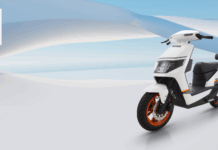Ten years ago, SAPPHIRE was the new fashion brand came in Pakistan’s fashion and textile industry, mostly known for unstitched lawn and long lines in summer. Now? It’s one of the most widespread, systemized fashion brands in Pakistan — and it’s got the receipts to prove it.
With nearly 50 stores and a growing e-commerce presence in over 30 countries, SAPPHIRE isn’t just keeping up — it’s setting the pace.
What started as a single-store venture in 2014, spun out from the textile behemoth Sapphire Group, has grown into a 50-location retail force with a digital presence that spans the globe. Unlike many fashion players that scale too fast or not at all, SAPPHIRE’s growth seems to have followed a deliberate — and surprisingly resilient — playbook.
Vertical Integration: Not Just an Industry Buzzword!!
A core reason behind SAPPHIRE’s steady expansion is its deep integration into the supply chain. Owning the journey from raw cotton to retail floor has allowed the brand to move faster and with more precision than competitors relying on third-party mills and vendors. New collections roll out in under a month, inventory waste is kept low, and prices are adjusted swiftly in response to market pressures.
In a country where inflation frequently reshapes consumer habits, this level of operational control is a major asset.
Beyond Fabric: Building a Broader Consumer Ecosystem!!
SAPPHIRE didn’t stop at unstitched fabric. The brand steadily expanded into ready-to-wear, western wear, menswear, kids-wear, and even fragrances and home textiles — each one contributing to customer retention and increasing cart size.
It’s a classic case of portfolio depth fuelling brand resilience. By catering to a variety of price points and style preferences, the brand has created multiple entry points for consumers, which helps spread risk and reduce dependence on any one category.
A Quiet Digital Powerhouse
While many Pakistani retailers scrambled to build their online stores after the pandemic, SAPPHIRE was already there — investing in international shipping, overseas warehouses, and localized online shopping experiences for the UK, North America, and Gulf regions.
The brand now fulfills orders in over 30 countries, with significant demand coming from expat-heavy areas like Birmingham, Sharjah, and Toronto. Their overseas stores also serve as marketing and logistics hubs — a smart hybrid strategy blending brick-and-mortar with cross-border e-commerce.
Data, Tech & ESG: The Silent Drivers
On the back end, SAPPHIRE has leaned into predictive analytics, behavioral targeting, and CRM tools to stay nimble and relevant. These tools aren’t just about marketing — they’re also enabling smarter inventory management and reducing dead stock, both critical for profitability.
The company has also rolled out several low-profile but impactful sustainability initiatives — from seed-paper bags to cause-driven collections. These efforts may not grab headlines, but they signal alignment with the growing expectations of ethical consumption, especially among younger shoppers and global markets.
Looking Ahead
With new product verticals in the pipeline and a stronger focus on loyalty tech and fintech integrations, SAPPHIRE seems poised to take the next step — potentially moving from regional player to global lifestyle brand.
The road ahead won’t be without friction. Real estate, inflation, and inconsistent footfall are ongoing challenges. But with a decade of methodical scaling under its belt, SAPPHIRE may just have the model to navigate them — and perhaps even rewrite what success in Pakistani fashion retail looks like.




























